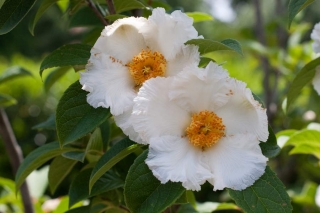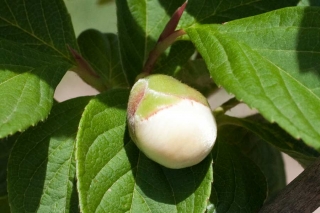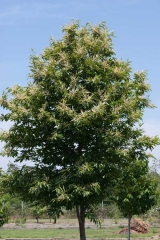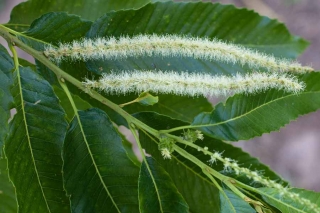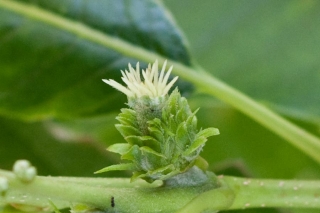 f that grouping of plants known as monoecious, there is a further division into two sub-groups: complete and incomplete, which refers to the nature of a plant’s reproductive parts; what we commonly call flowers. One each of these two sub-group is represented in this weeks floral pics. A botanical term invented in the 18th century, the word “monoecious” means, literally (from the Greek) “one house.” In other words, the plant’s reproductive parts, both male and female, are present on a single plant. The other grouping is known by the term dioecious, which of course means “two houses.” Plants in this grouping have male and female plants. Ginkgo and green ash fall into this grouping, and you are well advised to heed the warning to purchase only male trees of such plants. Stinking fruit in the case of the first, and pesky seed in the case of the second make this need-to-know info.
f that grouping of plants known as monoecious, there is a further division into two sub-groups: complete and incomplete, which refers to the nature of a plant’s reproductive parts; what we commonly call flowers. One each of these two sub-group is represented in this weeks floral pics. A botanical term invented in the 18th century, the word “monoecious” means, literally (from the Greek) “one house.” In other words, the plant’s reproductive parts, both male and female, are present on a single plant. The other grouping is known by the term dioecious, which of course means “two houses.” Plants in this grouping have male and female plants. Ginkgo and green ash fall into this grouping, and you are well advised to heed the warning to purchase only male trees of such plants. Stinking fruit in the case of the first, and pesky seed in the case of the second make this need-to-know info.
Complete: First our representation of a complete flower, what most readily recognize as a blossom.
The fully open blossom is beautiful enough, but the anticipatory bud, swelling to the size of a grape before bursting open, also creates a marvelous tease. All of the Stewartias require moist, well-drained soil. Our soil is well drained, but moisture is supplied by a water hose after the spring rains cease. A thick mulch of some sort helps as well. Smooth, tan bark that exfoliates in irregular patches along the main trunk and larger branches, and those lovely camellia-like blossoms are what make the Korean stewartia a favorite this time of year. The genus Stewartia is in fact closely related to the genus Camellia, which the blossoms readily betray. The tea plant is of the genus Camellia as well.
Incomplete: This is not your typical blossom, but blossoms they are; male and female separate on the same tree.
I thought I would show a couple of pics of their blossoms close up. The male blossom, called a catkin, are the long fuzzy parts in this photo. They produce the pollen which pollinates the female embryo—there are two of them, much less conspicuous farther down and to the right along the branch. The photo below is a close-up of the nut-to-be. It almost looks like a pineapple. In a few weeks the spines will begin to emerge all around the growing nuts. There will develope two half-sphered nuts flat against one another, growing inside a spike-o-rama deluxe. When they fall to the ground in the autumn, you better hope the spiny shell splits open to release the seeds inside, because they are sharp.
Have a great week end and a blessed Lord’s day.

